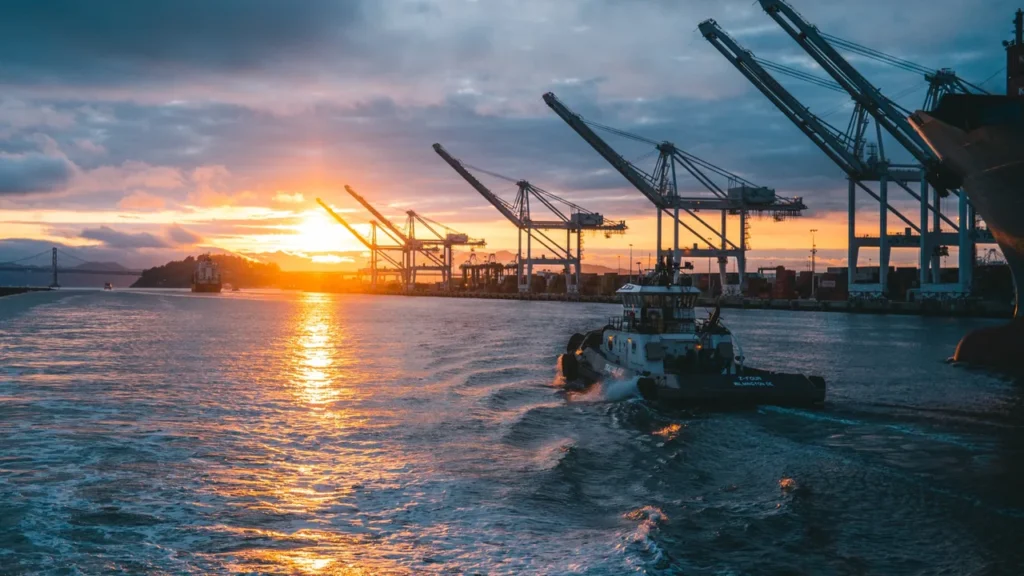The global energy sector is undergoing a major transformation, and Oil & Gas Infrastructure Trends 2025 stand at the center of this shift. In a landscape shaped by rising energy demand, geopolitical uncertainties, digital innovation, and sustainability pressures, oil and gas infrastructure must evolve faster than ever. From new refinery upgrades to massive pipeline projects and smart offshore systems, the year 2025 is redefining how the industry builds, operates, and invests in critical assets.
The Global Energy Transition & Its Impact on Oil & Gas Infrastructure
Energy transition remains one of the biggest influences on Oil & Gas Infrastructure Trends 2025. Governments and corporations worldwide are aiming to reduce carbon emissions, pushing infrastructure operators to rethink long-term strategies. Instead of relying solely on traditional fossil fuel systems, the industry is shifting toward hybrid models that integrate renewables, natural gas, and advanced technologies.
This transition doesn’t mean the decline of oil and gas. Instead, it represents a modernization wave: building cleaner refineries, strengthening pipeline networks, optimizing offshore assets, and integrating digital tools to improve efficiency. The core challenge in 2025 is maintaining energy security while meeting environmental standards.
Key Drivers Behind Oil & Gas Infrastructure Trends 2025
Increasing Global Energy Demand
Despite decarbonization efforts, worldwide energy consumption continues to climb. Developing nations across Southeast Asia, Africa, and the Middle East are experiencing industrial growth and population expansion. As a result, the demand for oil, gas, and petrochemical products remains robust, driving new investment in infrastructure expansion, additional storage systems, and upgraded transport networks.
Environmental Regulations & Compliance Pressures
Regulators across the U.S., EU, Middle East, and APAC regions are tightening standards on emissions, fuel cleanliness, and industrial waste management. This has accelerated the need for modern refineries and cleaner production processes. Compliance now requires significant investment in technologies such as carbon capture, low-sulfur fuel systems, and leak-proof pipeline coatings.
Technological Disruptions
Technology plays a crucial role in shaping Oil & Gas Infrastructure Trends 2025. AI-powered predictive maintenance, robotics, digital twins, and automated pipeline monitoring systems help operators reduce costs and prevent downtime. The integration of real-time analytics also improves operational safety and enhances productivity in large-scale facilities.
Refinery Expansion Trends in 2025
One of the biggest components of Oil & Gas Infrastructure Trends 2025 is the global wave of refinery expansion. Many refineries built decades ago are no longer capable of meeting today’s efficiency and environmental targets, making modernization a priority for operators worldwide.
Modernization of Aging Refineries
Aging refineries require upgrades to remain compliant and competitive. Modernization efforts include new distillation units, improved heat integration systems, advanced hydrocracking units, and digital optimization platforms. These upgrades help increase yield quality, boost energy efficiency, and reduce emissions.
Growth of Petrochemical Integration
Refineries are increasingly integrating petrochemical production into their operations to tap into the booming plastics, synthetic materials, and chemical feedstock markets. This shift improves profitability and makes refinery assets more resilient during fluctuations in fuel supply and demand.
Cleaner Fuel Production Projects
Global demand for cleaner fuels—especially low-sulfur gasoline, diesel, and jet fuel—is accelerating major refinery upgrades. In 2025, operators focus on investments that enable ultra-low-sulfur production and enhanced fuel blending. Biofuel integration and renewable feedstock processing technologies are also gaining traction.
Major Pipeline Projects Reshaping the 2025 Landscape
Pipeline development remains a critical aspect of Oil & Gas Infrastructure Trends 2025. Large-scale pipeline projects aim to improve energy distribution, enhance regional connectivity, and support economic growth in emerging markets.
Cross-Border Pipeline Developments
Countries in the Middle East, Central Asia, and Africa are pushing forward with massive pipeline investments. These cross-border systems strengthen trade partnerships, diversify supply routes, and reduce regional energy insecurity. Many of these pipelines are designed with newer, corrosion-resistant materials capable of withstanding extreme climates.
Digital Pipeline Monitoring Systems
Smart sensors, IIoT devices, and AI-driven leak detection tools are transforming pipeline reliability. Operators now rely on real-time pressure monitoring, underground mapping, and automated fault detection to prevent accidents and extend pipeline lifespan. Digitalization has become an essential part of 2025 infrastructure upgrades.
Safety Standards & Upgrades in 2025
Safety remains a core priority for pipeline operators. New materials, advanced welding techniques, and robotic inspection systems help minimize risks. Compliance with environmental safety standards ensures infrastructure resilience and reduces operational hazards.
Offshore Oil & Gas Infrastructure Trends 2025
Offshore operations continue to expand with the support of improved deepwater and subsea technologies. These trends play a critical role in meeting future energy demand, especially in regions with limited onshore reserves.
Deepwater Exploration Technologies
Advanced drilling equipment allows companies to operate at greater depths with improved safety and precision. High-strength risers, smart drilling platforms, and autonomous underwater vehicles (AUVs) are now standard tools in offshore projects.
Floating Production Systems (FPSO & FLNG)
FPSO and FLNG assets are increasingly popular due to their flexibility and lower construction cost compared to fixed offshore platforms. These floating systems allow companies to access remote gas and oil fields without building permanent infrastructure.
Subsea Infrastructure Expansion
Subsea processing technologies—such as underwater compression, pumping, and chemical injection—are helping operators reduce surface infrastructure requirements. Tie-back systems also enable smaller reservoirs to be connected efficiently to existing offshore facilities.
The Growing Role of Natural Gas Infrastructure in 2025
Natural gas continues to gain prominence in Oil & Gas Infrastructure Trends 2025 due to its lower carbon profile and rising global demand. Regions seeking to stabilize power generation while reducing emissions are heavily investing in new gas pipelines, LNG terminals, and underground storage systems. This infrastructure expansion reinforces natural gas as a transitional fuel supporting cleaner energy policies.
LNG Terminal Expansion
The LNG trade is experiencing significant growth, prompting countries to build new liquefaction and regasification terminals. These facilities support energy diversification and strengthen supply security. In 2025, large volumes of LNG infrastructure investment focus on modular terminals, floating storage units, and advanced cryogenic equipment that improves thermal efficiency and reduces operational costs.
Gas Storage & Transport Innovations
New storage technologies—such as salt cavern systems and high-capacity lined rock caverns—offer better flexibility for managing seasonal gas demand. Additionally, digital gas network management platforms provide predictive analytics for stock levels, pressure stability, and distribution optimization.
Digital Transformation in Oil & Gas Infrastructure
The integration of digital ecosystems is one of the most defining Oil & Gas Infrastructure Trends 2025. Operators are shifting toward data-driven decision-making models that increase safety, reduce downtime, and optimize infrastructure performance.
Smart Facilities & Real-Time Data Ecosystems
Cloud platforms, digital twins, and advanced edge computing allow refineries, pipelines, and offshore facilities to operate with real-time visibility. These systems monitor asset integrity, detect inefficiencies, and provide operational insights that support strategic planning. As facilities become smarter, unplanned outages and maintenance risks significantly decrease.
Cybersecurity as a Core Infrastructure Priority
With digitalization comes increased cyber risk. As a result, cybersecurity has become a fundamental component of Oil & Gas Infrastructure Trends 2025. Operators are establishing robust cyber defense protocols, segmenting networks, and deploying AI-powered threat detection systems to safeguard mission-critical assets from intrusions and ransomware attacks.
Sustainability & Resilience Priorities
Sustainability has shifted from a corporate ambition to an operational requirement. Infrastructure developers now incorporate low-carbon technologies and climate-resilient engineering practices as part of their long-term asset strategies.
Low-Carbon Infrastructure Strategies
The industry is investing heavily in methane mitigation systems, flare reduction tools, and electrified equipment to cut emissions. Carbon capture and storage (CCS) technologies are increasingly integrated into refinery expansion plans and major pipeline projects, helping operators achieve compliance with tightening climate regulations.
Climate-Resilient Engineering Designs
Extreme weather events continue to threaten global infrastructure. In 2025, engineering designs prioritize corrosion-resistant steel, flood-proof layouts, heat-resistant coatings, and elevated platform structures. These resilience measures protect high-value assets and ensure operational continuity during environmental disruptions.
Investment & Market Outlook for 2025
Investment trends highlight renewed confidence in oil and gas infrastructure. Governments and private investors are increasing capital allocation for refinery expansion, pipeline enhancements, LNG capacity growth, and digital transformation projects. The Middle East and Asia-Pacific regions are expected to lead global Capex due to strong industrial demand and large-scale energy security programs.
Supply Chain Shifts and Risks
The supply chain remains under pressure from steel price fluctuations, shipping constraints, and geopolitical disruptions. Companies must adapt faster, securing reliable suppliers and diversifying material sources to avoid delays in pipeline projects and refinery upgrades.
Challenges & Risks in Oil & Gas Infrastructure Trends 2025
Despite the optimism, several challenges influence the pace and success of infrastructure development. Geopolitical tensions may interrupt cross-border cooperation, while environmental protests can delay major refinery expansion. Skilled labor shortages also impact project timelines, particularly in specialized offshore and pipeline construction roles. Additionally, rising construction material costs—especially steel—pose financial pressure on large-scale developments.
Conclusion: What Oil & Gas Infrastructure Trends 2025 Mean for Global Energy
Oil & Gas Infrastructure Trends 2025 signal a powerful transformation phase for the global energy industry. As the world navigates toward a lower-carbon future, oil and gas infrastructure must evolve through modernization, digitalization, and sustainability-driven engineering. From next-generation pipelines to smarter refineries and resilient offshore systems, 2025 marks the beginning of a more efficient, safer, and future-ready energy ecosystem.



